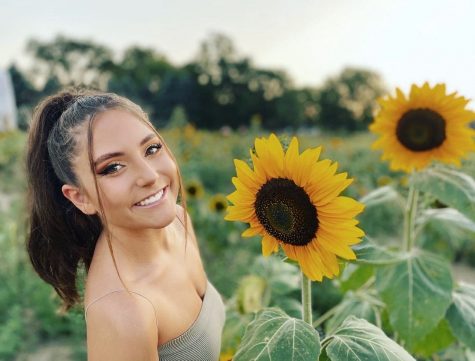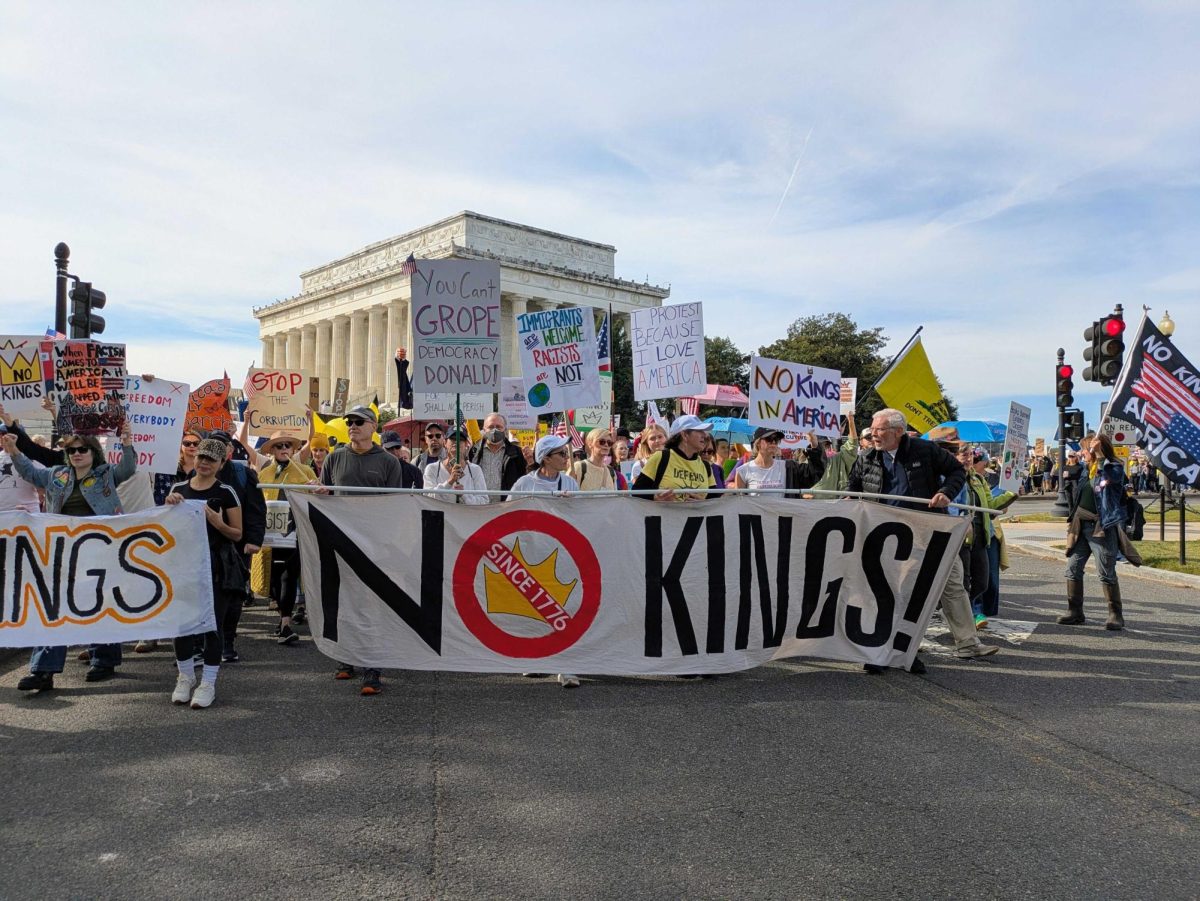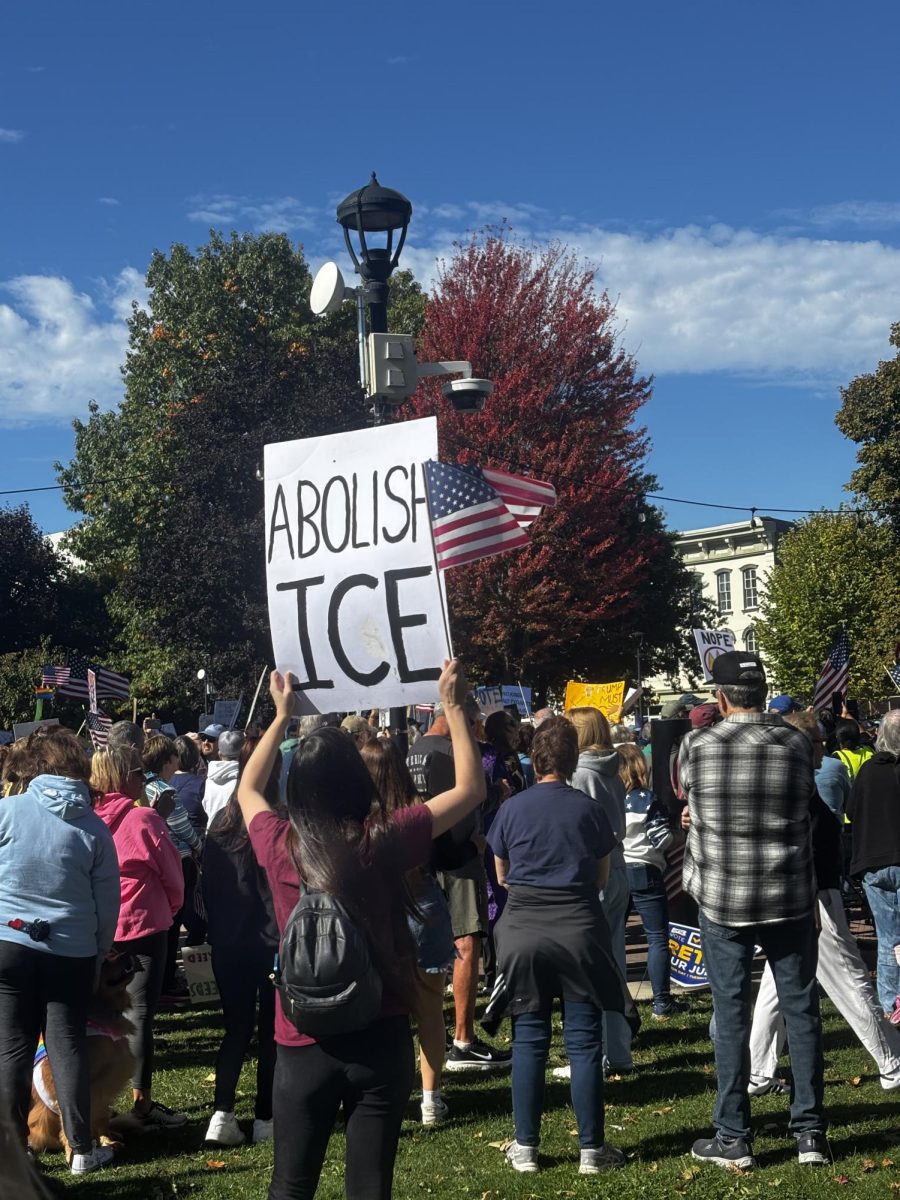Gannon community marks one year since pandemic began
A reflection of faculty and staff on the changes and lessons of a year of COVID-19
The 2020-2021 academic year has seen unprecedented changes due to the COVID-19 pandemic. Mask-wearing, hand sanitizing stations around campus, signs about maintaining social distance and protocols to keep students and faculty safe as they navigate face-to-face classes amid the pandemic have become the norm. Stations like the one pictured are common and have become a normal part of campus appearance in the past year.
March 16, 2021
On March 11, 2020, the World Health Organization declared COVID-19 a pandemic. Six days later, students and staff at Gannon University were sent to their respective homes.
No one knew what was next. No one knew how to prepare for what would occur in the coming months.
Campus was vacant. But life could not be held at a standstill. Classes and education had to continue.
This fact was met with sadness and fear by the Rev. Shawn Clerkin, co-director of the School of Communication and the Arts. When Clerkin found out that delivery at Gannon would transition to remote, he sobbed.
“This is not what I signed up for,” Clerkin said. “When I decided to be an educator, this is not at all what I wanted to do.”
Ashley Caldwell, assistant of Gannon’s honors program, said that the most profound impact of the pandemic is communication.
“I get great satisfaction from improving the energy in a room and I have found it incredibly difficult to master that over Zoom,” Caldwell said. “Tone and compassion are just not easily conveyed through text or video communication.”
Caldwell also said that the pandemic has allowed her to be more thoughtful and engage in self-discovery.
“When we were forced to be still, I took this as an opportunity to really get to know myself and learn about who I truly am, who people think I am and how I can grow into who I want to be,” Caldwell said.
“I hope everyone else had this opportunity because it has improved every aspect of my life. Slowing down to observe and absorb have been really impactful on this journey.”
Human beings are social creatures, meant to be in relationship and communion with others. This lack of community has significantly affected many. Clerkin said that the pandemic has affected his teaching, as he could not receive immediate feedback to know that students are learning.
“I feel like everything in my life is mediated by not only this mask, but what it represents,” Clerkin said. “I thrive on engagement, I thrive on dialogue and I thrive on playful interaction with students. All of these things are mediated. I found that a lot of my function had really been impacted.”
According to Clerkin, wearing masks makes it difficult to establish bonds as he knew them before the pandemic.
“I can’t see smiles,” Clerkin said. “It’s really hard to overcome that psychological and physical distance.”
However, some positives have come out of the pandemic. For many, family was brought closer together. People have also come to the realization that humans have more in common than they do differences.
“We have all been challenged to do things that are outside of our normal silo and for the most part this has promoted self-awareness and individual growth,” Caldwell said.
“After the initial pandemonium, it was more about collaboration, tearing down those silos and figuring things out, which took tremendous trust and vulnerability. I hope we continue to lean on each other in these creative ways.”
Society as a whole has had to learn to be proficient in and appreciative of technology. This endeavor caused an increase in community online.
Although it is not the same as in-person connection, people are able to engage with each other easier and more often. Clerkin’s church, for example, has gone from 80-100 people in weekly, in-person attendance to 800-900 people streaming the sermon online.
“We’re pretty resilient,” Clerkin said. “It’s all about adaptability.”
The implementation of Zoom in educational settings can also be considered a positive, according to Ephram Duku, a freshman biology pre-med major.
“The pandemic allowed for online resources to be better used within classrooms,” Duku said.
For Grace Foster, a sophomore physician assistant major, a greater ability to adjust is a positive that has come out of the pandemic.
“I think the pandemic has also allowed us to be creative in the sense of how we are able to find human connection and how to make the most out of it when we can,” Foster said.
Because in-person contact is limited, it makes the physical connections we will have in the future even more meaningful, Clerkin said.
“I don’t think we’re going to be shaking as many hands and giving as many hugs, but the ones we do give and the ones we do take are going to be really special,” Clerkin said.
Even after the pandemic is over, many, including Clerkin, will still take precautions to ensure safety and health.
“I used to laugh when I would see people wearing face masks on airplanes,” Clerkin said. “I’m not laughing anymore; in fact I’m going to be the guy wearing one.”
This pandemic has forced people to be more flexible in response to change. Many have come to the realization that life can change in an instant, and it is important to be prepared for it.
“Change is the only constant, and chaos is the only thing you can count on,” Clerkin said. “If life is always changing, how do I change with it without changing myself?
“I can always employ new techniques, I can always apply new processes and new procedures, I can always use technology, but how do I maintain the me-ness and us-ness of relationships?”
Lack of in-person community has taken a toll, according to Clerkin.
“I haven’t hugged my best friend in 14 months,” Clerkin said. “That has sucked. But what a great feeling it will be.”
Relationships have been tested and challenged. However, they are still in existence. We are still human beings, still meant for community. It is a matter of recognizing these changes and finding ways to maintain the most important aspects of our humanity.
“So much has changed, but I think the idea of sticking together and supporting one another has remained at the center of importance,” Foster said. “I hope in the future that people will still prioritize what is important and can be intentional with creating human connection.”
Some things remain untouchable, despite the pandemic.
“Our creativity, whether it be on an actual stage or a virtual stage, remains the same,” Clerkin said. “We are still storytellers, we are still content creators, we are still image-makers, we still collaborate, we still adapt.”
Everyone is in this together, Caldwell said.
“Communities came together to help one another financially, we supported each other when there were ill family members and our reach was so vast because of technological improvements,” Caldwell said.
“As we hopefully recover from a year of change, I hope we continue to recognize the humanness in us all and continue to support each other.”
There is a greater sense of hope after a year of the pandemic than there was when it first began.
“I believe that within time, the pandemic will subside and life before COVID-19 will return again,” Duku said. “With the vaccines and masks, individuals have the right to return to their jobs within the next year.”
Despite it all, humanity has come together in ways that might not have occurred pre-pandemic. While it has been isolating for some, the pandemic has fostered community, even if that community looks different.
“I’m looking forward to us feeling those moments of commonality and the things we share rather than those that separate us,” Clerkin said.
“I’m looking forward to breaking down those barriers, breaking down those walls that divide us and trying to find new ways of being together, as people who share the same spaces and share the same planet.”
ANNA MALESIEWSKI







